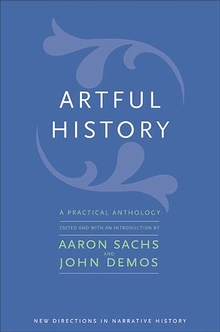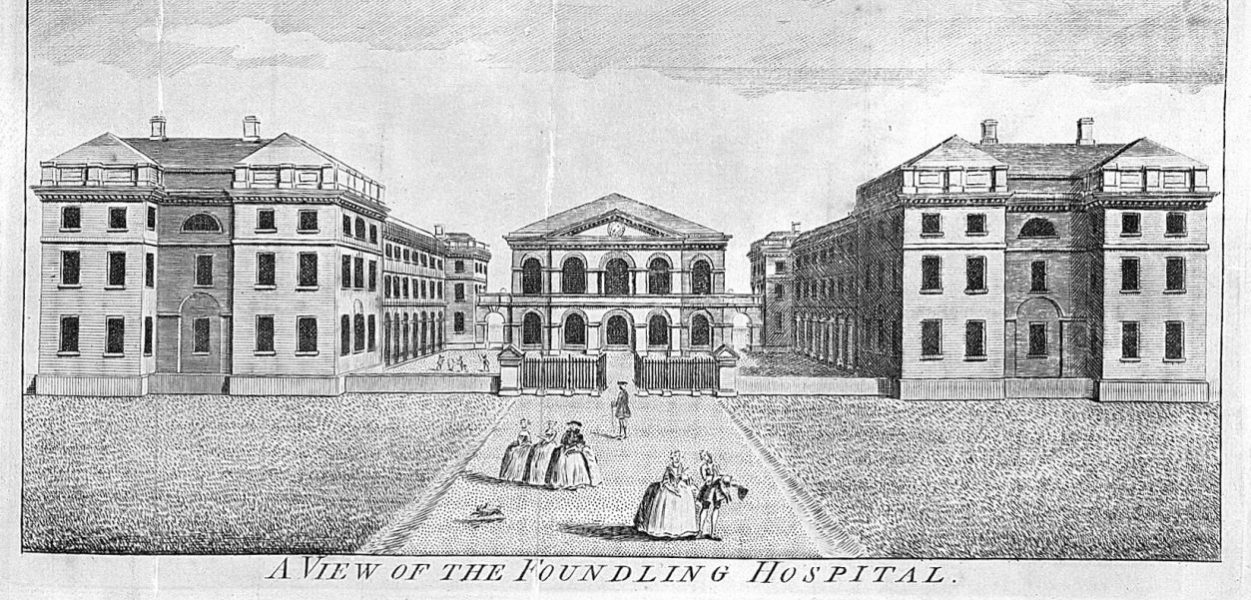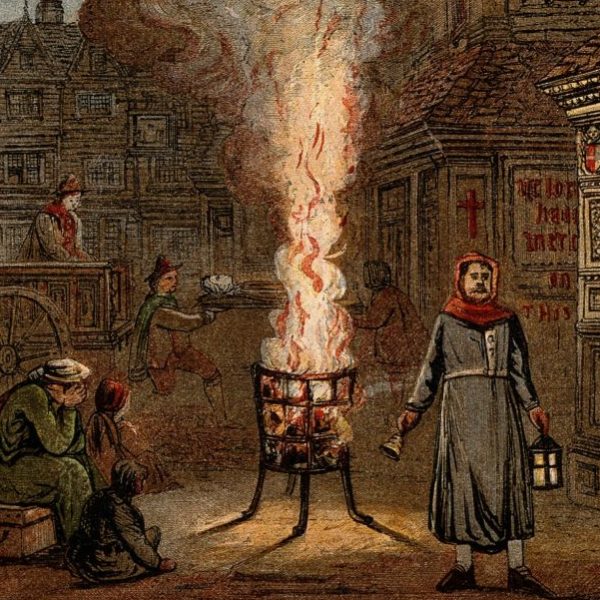Orphans in Eighteenth-Century London
Stella Tillyard—
On a bleak spring evening in 1741 a crowd gathered in a dark, narrow London street. At its edge well-to-do City merchants on their way westward through Hatton Garden mingled with the wretched and curious poor, washed up from tenements to the north, east, and south, looking for a handout or a meal. In the middle, dozens of women in their best clothes jostled and flowed towards the door of a large double-fronted house like filings drawn to a magnet. The light filtering out of the house windows sent dim rays over the crowd, illuminating their bundles tied in rags and wrapped in flannel blankets. They were babies, some sleeping, some gazing about, some sick and crying.
For an hour the crowd ebbed and surged and waited. Then at eight o’clock, in imitation of the mothers’ misery and sin, the light in the house’s entryway went out. The door opened. The crowd fell silent and a bell rang. A woman sprang forward and plunged with her child into the darkness. The door closed behind her.
Inside the house the woman was ushered into a room on the right of the hall. She gave her name, but it was not written down. Then she watched as her child, a boy, was stripped layer by layer of the stain of her folly and poverty. First his clothes were taken off and cast away. Then a little memento she had hoped would stay longer with him than she could was catalogued and set aside. Then Dr. Nesbitt, donating his services for the occasion, inspected the child and pronounced him sound. Finally he was given a number, One, as the first child in the hospital. Distraught and relieved, the mother looked on in silence. A few minutes later she was dismissed, came out of the house, and lost herself in the darkness of the crowd. The door closed behind her.
Soon the bell rang again. Another woman darted up with her bundle, entered the house, and returned empty-handed. The bell rang, again and again, until thirty women had taken in their children and come out without them and the Foundling Hospital was full.
For four days the house was quiet. The infants slept and sucked, motherless and nameless. Then, on the evening of 29 March, Hatton Garden was crowded and noisy once again. Heavy four-wheeled carriages, with lamps burning and footmen aloft, lumbered across the cobbles. On their sides were tiny emblems with mottoes curling underneath that dignified those inside. By the lighted entrance of Number 61, the footmen jumped down and opened the heavy leather-covered doors. Noblemen and noblewomen, physicians, merchants, doctors, and Members of Parliament were handed out. Taking care to avoid the mud, they went inside and up the stairs. The state room on the first floor was alive with light. Light twinkled and sparkled from belts and buckles, from necklaces and ornaments. It lay puddled like mercury in the folds of silk gowns and in silver bowls and cups. Servants carrying candles went up and down the stairs and announced the new arrivals: the Duke of Bedford, president of the hospital; the Earl and Countess of Pembroke; the Duke and Duchess of Richmond with their eldest daughter; William and Anne Hogarth; Lord and Lady Albemarle; Captain Robert Hudson; Mr. Lewis Way. Their names rang out over the rustle of gowns, the clink of shoe buckles, and the murmur of greetings.
The company sat and the Reverend Samuel Smith read evening prayers. Then the infants, numbered One to Thirty, were brought in for christening. Beyond the impromptu font sat not their mothers and fathers but surrogate families of the finest, wealthiest, and worthiest in the land. The Reverend Mr. Smith took the first child from his nurse, approached the font, and dabbed the baby’s forehead with holy water. The little child, newly clothed in lace and cotton, with a cap jammed tightly on his hairless head, was baptised Thomas Coram, after the hospital’s founder. Eunice Coram followed. The aristocracy lent the children their family names. Charlotte Finch was named for the Duchess of Somerset, John Russell for the Duke of Bedford, Charles Lennox for the Duke of Richmond, Sarah Cadogan for his wife. Caroline Lennox was named for the Duke’s daughter, an anxious, intelligent girl of eighteen sitting with her parents. Secure in their names, the rich and the mighty bestowed them on little children, sending them forth watered with greatness. Their impoverished, orphaned little doubles would, as long as they lived, reflect the importance of their patrons.
After the baptismal ceremony the company departed, clattering westward in their carriages out of their namesakes’ lives. Lady Caroline Lennox, trundling back to Richmond House in Whitehall, left little Caroline to a life in the shadow. Darkness descends over her as it did over the house in Hatton Garden that night. Perhaps she became a servant, perhaps even a milliner or a mantua maker. But it was just as likely that, like one of Lady Caroline’s own children, she would die of a fever before she could understand that she had been orphaned into a life of misery.
From Artful History edited by Aaron Sachs and John Demos. Published by Yale University Press in 2020. Reproduced with permission.
Aaron Sachs is professor of history at Cornell University. John Demos is professor of history emeritus at Yale University. Together, they are the co-editors of Yale University Press’s New Directions in Narrative History series.
Further Reading:



























